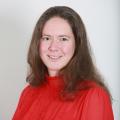
ASTRONOMERS studying supermassive black holes say the universe might be growing more rapidly than previously thought.
Researchers from Durham University have been looking at black holes to assess the growth of the cosmos.
Their latest research, published yesterday, has found the universe might be expanding faster than previously thought, possibly because the density of dark energy – the mysterious force driving the expansion - changes through time.
Study co-author Dr Elisabeta Lusso, from Durham’s Centre for Extragalactic Astronomy, said: “Black holes are the most luminous persistent sources of the universe and allow us to measure its expansion rate at very early times.
“Our results suggest that the early expansion of the universe is different from that predicted by the Standard Cosmological Model.
“We may need to explore new physics, for example rethinking the potential properties of dark energy.”
Researchers used a combination of space and ground-based instruments including the Sloan Digital Sky Survey telescope and the European Space Agency’s XMM-Newton Space Observatory to observe the ultra-violet and X-ray emissions of 1,600 supermassive black holes at various points in time across the universe.
Previously researchers had used the light from supernovae – exploding stars – as a way of measuring the growth of the universe, which is 13.7 billion years old.
However, this limited them to observations within a time period of up to four or five billion years after the Big Bang.
Black holes allow researchers to look even further back in time, providing them with a clearer picture of the expansion of the early universe.
Lead author Dr Guido Risaliti, of the Università degli Studi di Firenze, said: “One of the possible solutions to the expansion of the early universe would be to invoke an evolving dark energy, with a density that increases as time goes by.
“This would imply an expansion rate of the universe in agreement with our measurements. However, this is only one of the many models (all including new physics) proposed by the theorists, and much more work is needed to find a unique solution.”
The researchers said the next step in their study was to try to identify and measure the distance of black holes that exist even closer to the birth of the universe.
The current study was funded by a European Union COFUND/Durham Junior Research Fellowship and ASI-INAF.



Comments: Our rules
We want our comments to be a lively and valuable part of our community - a place where readers can debate and engage with the most important local issues. The ability to comment on our stories is a privilege, not a right, however, and that privilege may be withdrawn if it is abused or misused.
Please report any comments that break our rules.
Read the rules here